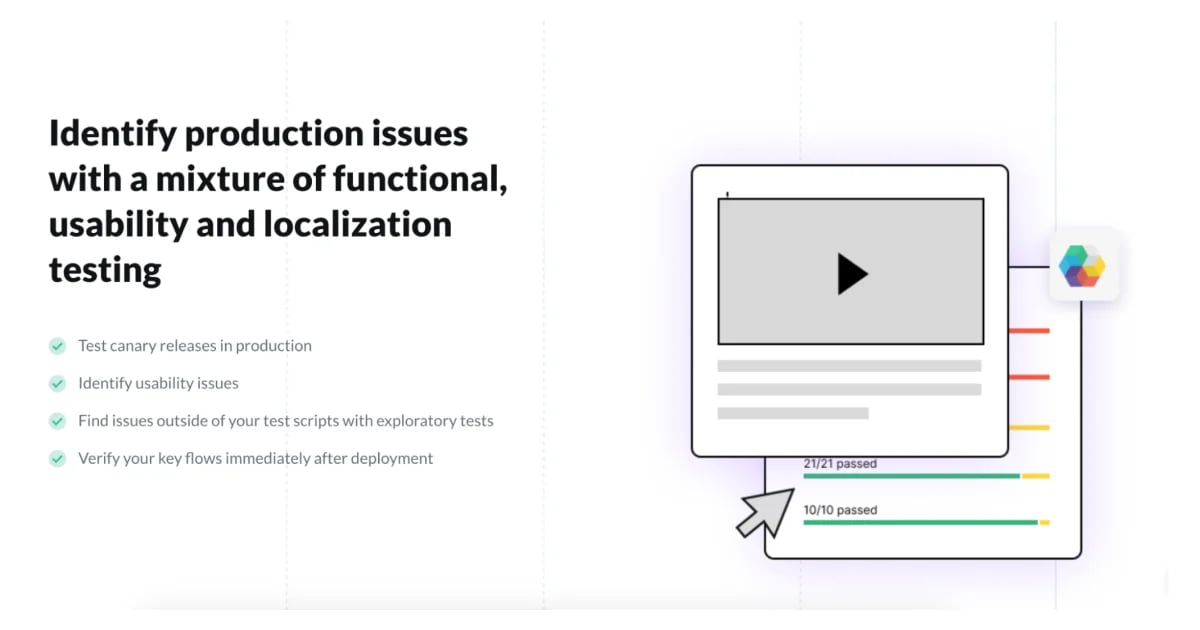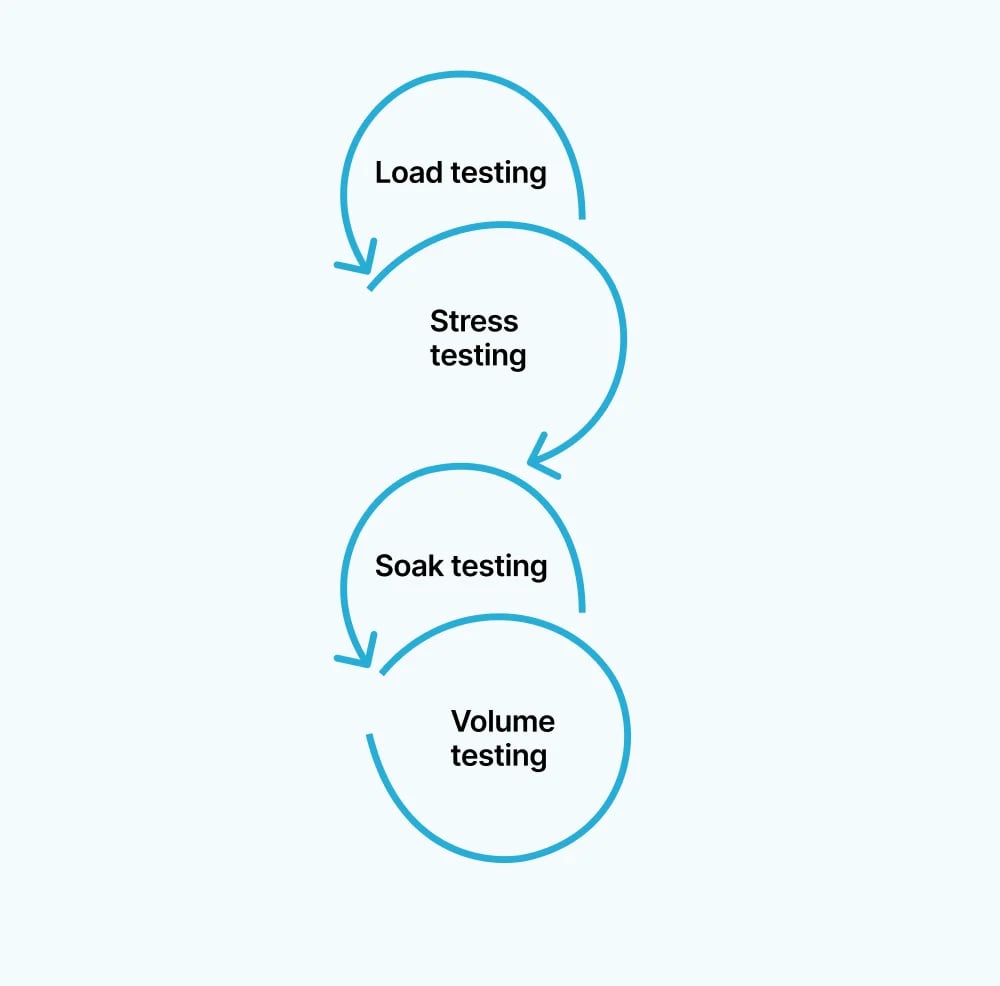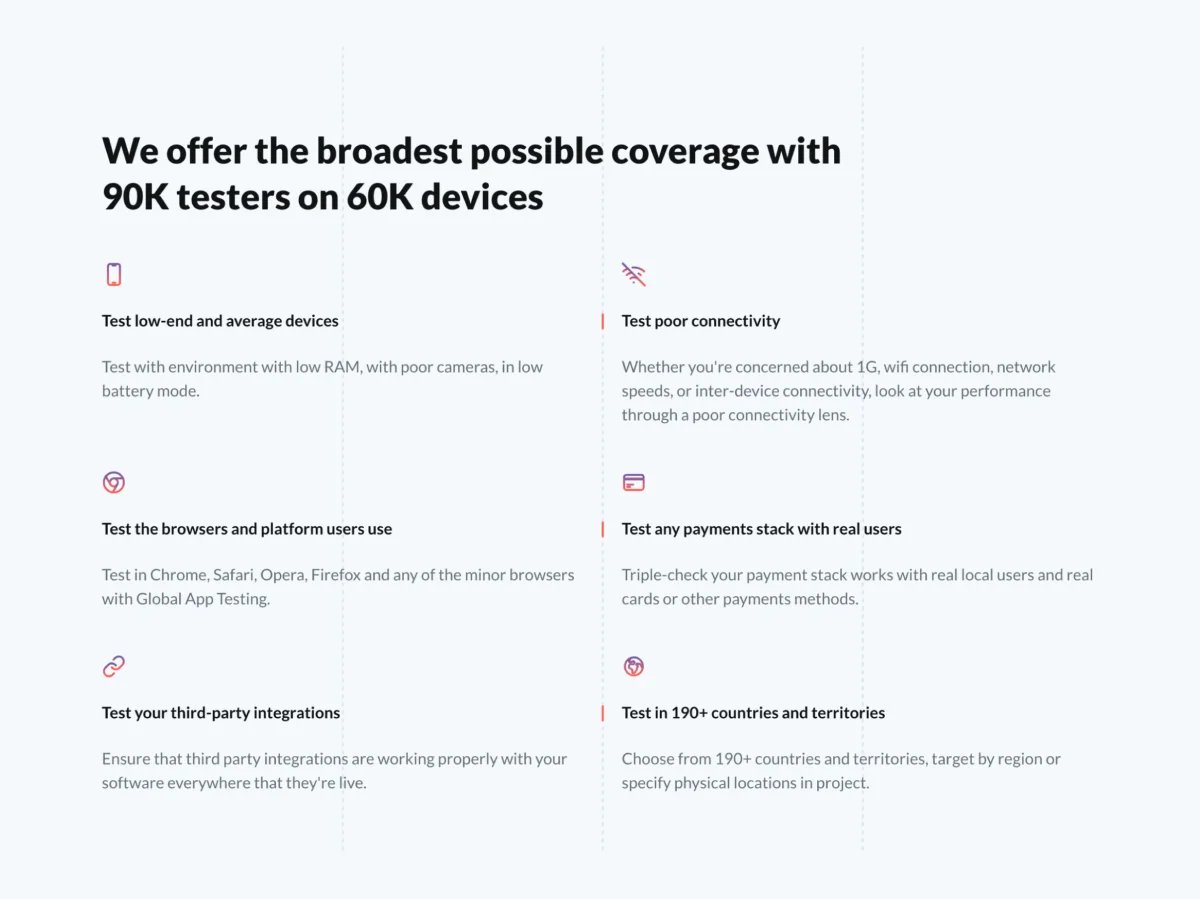Transaction flow testing techniques in software testing
Whether it's processing payments, communicating with external sources, or executing payment functions, transaction flow testing ensures that your system operates smoothly and securely. For users, this means reliability and a seamless experience. And for businesses, it's about maintaining operational efficiency and customer satisfaction. In this text, we'll delve into the following:
- Explain what transaction flow is and how it works
- Pinpoint best practices for transaction flow testing
- Examine transaction flow testing techniques for an easier understanding of the whole process
Let’s begin!
Join our community of 70,000+ testers around the globe and earn money testing websites and apps in your free time.
What is transaction flow testing?
Transaction flow testing is a method used in software testing that aims to verify each stage of a transaction within a system, particularly in applications with payment processes. These stages usually are data entry, processing, output generation, and validation. It helps developers identify design flaws, coding errors, and system-level issues, helping prevent potential issues with the software.
Transaction flow testing objectives
Transaction flow's main objectives are:
- Exception management: Testers evaluate error message display and transaction rollback to maintain system integrity.
- Enhanced scalability and performance: Testing verifies consistent transaction handling without performance lags during heavy loads or unexpected errors.
- Accuracy and integrity: Transactional flow testing ensures data integrity throughout the flow, ensuring accurate validation and output handling.
- Consistency and reliability: Issues due to external factors and dependencies are eliminated, ensuring consistent system performance.
Benefits of transaction flow testing
Here are some benefits of transaction flow testing:
- Transaction flow testing can help identify errors when they are easier and cheaper to fix.
- By finding and fixing defects early on, transaction flow testing can save the time, money, and resources required to identify and rectify defects later on in the development cycle.
- Through transaction flow testing, developers can identify specific areas where adjustments need to be made, leading to improved system performance and better customer satisfaction.
- Transaction flow testing improves software quality and reliability by ensuring that transaction processing is accurate and complete.
Transaction flow testing techniques
Now, let’s examine transaction flow testing techniques in more detail.
1. Conduct analysis
Before testing, it's crucial to have a solid understanding of the payment process and identify any potential areas of weakness or vulnerabilities. This can involve reviewing documentation, interviewing stakeholders, and examining the system architecture. During the analysis phase, examine the payment process from different angles and identify any potential gaps in the flow. This can include ensuring that all necessary input and output data is captured correctly, verifying that sensitive information is secured appropriately, and testing for potential vulnerabilities related to data manipulation or processing errors.
2. Create a detailed plan
Creating a detailed test plan can help to ensure that testing activities are organized, systematic, and effective. A well-crafted plan should outline the various testing activities to be performed, their order and the tools to be used. This can include identifying the specific use cases, test scenarios, and test cases to be executed, as well as defining the testing environment, resource requirements, and timelines.
3. Choose testing tools
Choosing the right testing tools is important for maximizing testing efficiency and effectiveness. A variety of testing tools are available, including commercial and open-source options. Some common types of testing tools used in transaction flow testing include load testing tools, security testing tools, and other manual and automation testing tools. When selecting testing tools, consider factors such as compatibility with the payment system, ease of use, and cost.
Pro tip
For transaction flow testing services, Global App Testing provides testing with real users, virtual transactions, global coverage, and compliance-focused testing that can be scaled as needed. This ensures smooth transaction processing across all transaction types and devices worldwide. Additionally, we provide the following testing types:
- Functional testing: Ensures significant functions operate correctly across any browser or operating system.
- Usability testing: Evaluate user experience across different devices and platforms to ensure seamless operation.
- Accessibility testing: Tests compatibility with assistive technologies, ensuring accessibility for users with disabilities.
- Regression testing: Ensures new changes or upgrades do not negatively affect product stability over time.
- Compatibility testing: Ensures optimal performance across various browsers, devices, operating systems, and network configurations.
- Localization testing: Evaluates app performance for international markets, ensuring compliance and local relevance.

4. Understand the transaction flow
The transaction flow describes the sequence of events, information flow, and interactions between all involved parties throughout the payment process. To understand the transaction flow, testers must have an in-depth understanding of the payment process, its underlying architecture, and any third-party integrations. Thus, provide testers with all relevant documentation and be familiar with all internal processes. This also includes software interfaces, communication protocols, and other factors that may impact the transaction flow system.
5. Consider end-to-end testing
End-to-end testing is a type of testing in which the entire transaction flow process is tested from start to finish to ensure that all components of the payment process are working together properly. During this type of testing, testers simulate the entire transaction process, from initiating the transaction to receiving confirmation of its completion. This can include activities such as inputting information, processing the transaction, and verifying that the transaction has been completed.
6. Include performance testing
Performance testing is another crucial aspect of transaction flow testing techniques related to a payment process. This type of testing focuses on evaluating the system's ability to perform under various conditions with large quantities of data and users. There are different types of performance testing techniques, here are some main ones:
- Load testing: The system is tested to determine how it performs with an increasing number of users or transactions.
- Stress testing: The system is tested under extreme conditions to identify how it responds when workloads exceed the expected volumes.
- Soak testing: Run the system under normal or expected workloads for an extended period to evaluate how it performs.
- Volume testing: Test the system with a large amount of data to verify its ability to handle increasing amounts of data without degrading its performance.

7. Create detailed test case scenarios
Test case scenarios are designed to outline the steps necessary for testing each aspect and function of the payment process. When creating them, it is important to identify and consider all possible scenarios that could occur during the transaction flow process. This covers inputting incorrect information, processing delays, and any other unexpected situations that could impact the system's processing capabilities. Additionally, test case scenarios should include detailed descriptions of the expected results of each scenario, identifying any potential errors or issues that could occur.
8. Collect and analyze results
Once the system has been thoroughly tested, collect and analyze the results to identify any issues, bugs, or errors that need to be fixed. The analysis may involve examining the performance of various transaction flow components, such as communication channels, data access, and external systems integrations. The collected results and analysis would help to improve the transaction flow system and increase the overall efficiency and functionality of the transaction processing system.
9. Retest if needed
Any issues found during initial testing need to be fixed and then retested to ensure there are no additional errors and that the changes made have resolved the identified issues. Retests can be done using automated testing tools at the unit or integration level, as well as manual testing for experience and exploratory testing at the system level. Repeating the testing process can be a time-intensive task, but its importance lies in protecting against recurring issues.
Conclusion
Understanding transaction flow testing is just the first step in creating a product that will meet the expectations of all involved parties. As explained above, each technique is important, and implementing all steps into the testing process ensures thorough system development. However, choosing the right tools is always a question of all questions. Let us explain what makes Global App Testing a good choice.
How can Global App Testing assist?
Global App Testing provides a solution for transaction flow testing by offering a network of skilled testers across various devices. Our platform and detailed reporting streamline bug identification and resolution, making Global App Testing stand out for its unique benefits in transaction flow testing. Here are some additional features that Global App Testing can provide:
Efficient and Integrated Platform:
- Seamlessly integrates into your development process, enhancing efficiency.
- A centralized dashboard allows easy management of testing projects, progress tracking, and communication with testers, fostering collaboration.
- Gain insights into each identified bug's environment and receive a visual proof for better issue understanding.
Rapid and Reliable Service:
- Round-the-clock service ensures test results are delivered within 6-48 hours, even for overnight launches, effectively meeting urgent testing requirements.
Global User Feedback:
- Access a diverse community of over 90,000 testers from 190+ countries, providing global perspectives and extensive testing coverage.

Product Assurance:
- Conduct various types of testing, including functional, compatibility, usability, and performance testing, to ensure product quality assurance.
Additional Resources:
- You can benefit from a wealth of free guides, webinars, and reports to support research and implementation of best practices in manual mobile testing.
Take the next step and sign up now to schedule a quick call today!
We can help you drive transaction flow testing as a key initiative aligned to your business goals
FAQ
What is a payment gateway?
A payment gateway is a system that facilitates the transfer of payment information between the customer and the merchant.
What are payment processors?
Payment processors are third-party providers that handle the processing and settlement of payment transactions between the merchant and the customer.
How do you ensure that the testing environment accurately reflects the live/production environment?
To ensure that the testing environment accurately reflects the live/production environment, testers should replicate the hardware, software, and data of the real environment as closely as possible.
Keep learning
Payment gateway test cases - A definitive guide
What is payment gateway testing? Everything to know
How to perform manual mobile testing

